Multifactorial Analysis of Defects in Oil Storage Tanks: Implications for Structural Performance and Safety
Abstract
1. Introduction
1.1. Short Background on Oil Storage Tanks Assessment in Industry
1.2. Importance of Structural Integrity in Oil Tanks
1.3. Common Types of Defects Affecting Oil Storage Tanks’ Integrity
1.3.1. Corrosion
1.3.2. Weld Cracks
1.3.3. Buckling
1.3.4. Denting
1.3.5. Ununiform Settlement
1.4. Role of Key Factors in Structural Failures
1.4.1. Wall Thickness
1.4.2. Deformations
1.4.3. Local Stresses
2. Tank Failure Mechanisms
2.1. Previous Studies on Oil Tank Failures
2.1.1. Common Causes Identified in Studies
2.1.2. Regulatory Aspects and Standards
2.1.3. Lessons Learned from Case Studies
2.2. Comprehensive Review of Tank Failure Mechanisms
2.2.1. Material Failure Mechanisms
Corrosion
Erosion
Fatigue
2.2.2. Mechanical Failure Mechanisms
Buckling
Fracture
Overloading
2.2.3. Failure Due to External Factors
Environmental Factors
Human Factors
2.2.4. Other Failure Mechanisms
2.3. Impact of Reduced Wall Thickness (Due to Corrosion or Erosion)
2.4. Studies on Local Stresses and Their Propagation
2.5. Gaps in Current Research
3. Methodology of Tank Evaluation
3.1. Description of Tank Geometry and Importance of Each Component
3.2. Evaluation of Each Possible Degradation Mechanism and Its Grade of Importance in Tank Stability
3.3. Tank Non-Destructive Examination and Defects Identification
3.4. Tank Condition Assessment by Digital Twin and FEA
Processing of the Input Data to Create a Tank Digital Twin
- Shape, which can be produced by either cloud point data or a 3D deformation map.
- Minimum wall thickness is measured separately by operators for each circular section.
- Material, which is known to be S235 (corresponding to the old Romanian OL37).
4. Results and Discussion
4.1. Wall Thickness Reduction
4.2. Deformations and Geometric Imperfections
4.3. Local Stress Concentrations
4.4. Equipment, Personnel Requirements, and Cost–Benefit Analysis
5. Conclusions
6. Recommendations and Suggestions for Future Work
- Visual inspection to be performed by an experienced engineer;
- Wall thickness measurements, preferably performed by a SLOFEC scanner;
- Shell 3D scan to investigate the local deformations;
- Welds NDT Testing;
- Material identification (PMI).
Author Contributions
Funding
Data Availability Statement
Conflicts of Interest
Abbreviations
| NDT | Non-Destructive Testing |
| FEA | Finite Element Analysis |
| AST | Above-ground Storage Tank |
| API | American Petroleum Institute |
| EEMUA | Engineering Equipment and Materials Users Association |
| LIDAR | Light Detection and Ranging |
| SLOFEC | Saturated Low-Frequency Eddy Current |
| UT | Ultrasonic Testing |
| MPT | Magnetic Particle Testing |
| AE | Acoustic Emission (testing) |
| RT | Radiographic Testing |
| PT | Dye Penetrant Test |
| LCO | Light Cycle Oil |
| IFR | Internal Floating Roof |
| SHM | Structural Health Monitoring |
| DT | Digital Twin |
| SLS | Service Limit State |
| PMI | Positive Material Identification |
| AI | Artificial Intelligence |
| IoT | Internet of Things |
| HAZ | Heat Affected Zone |
| EU | European Union |
| CA | Corrosion Allowance |
| MDMT | Minimum Design Metal Temperature |
| VCE | Vapor Cloud Explosion |
References
- Process Safety Management for Storage Facilities—OSHA. Available online: https://www.osha.gov/sites/default/files/publications/OSHA3909.pdf (accessed on 4 May 2025).
- Stoicescu, A.-A.; Ripeanu, R.G.; Tănase, M.; Toader, L. Current Methods and Technologies for Storage Tank Condition Assessment: A Comprehensive Review. Materials 2025, 18, 1074. [Google Scholar] [CrossRef] [PubMed]
- Non-Destructive Testing (NDT): Types and Techniques—Voliro. Available online: https://voliro.com/blog/non-destructive-testing/ (accessed on 4 May 2025).
- API 650: Welded Steel Tanks for Oil Storage—Law Is the Operating System of Our Society. Available online: https://law.resource.org/pub/us/cfr/ibr/002/api.650.2007.pdf (accessed on 4 May 2025).
- API 653; Tank Inspection, Repair, Alteration, and Reconstruction, 5th ed. American Petroleum Institute: Washington, DC, USA, 2014; 162p.
- Storage Tanks Then vs. Now—DirecTank Environmental Products. Available online: https://directank.com/storage-tank-vs-now/ (accessed on 4 May 2025).
- Enguita, S.P.; Chen, C.-H.; Kovacic, S. A Review of Emerging Sensor Technologies for Tank Inspection: A Focus on LiDAR and Hyperspectral Imaging and Their Automation and Deployment. Electronics 2024, 13, 4850. [Google Scholar] [CrossRef]
- Importance of Storage Tank Inspections & Main Issues|Adler & Allan. 2023. Available online: https://www.adlerandallan.co.uk/knowledge/insight/importance-of-storage-tank-inspections-and-main-issues (accessed on 4 May 2025).
- Bonnín-Pascual, F.; Ortiz, A. Detection of cracks and corrosion for automated vessels visual inspection. In Artificial Intelligence Research and Development; IOS Press: Amsterdam, The Netherlands, 2010. [Google Scholar]
- Hydrocarbon Storage Tank Failure Modes—Inspenet. Available online: https://inspenet.com/en/articulo/hydrocarbon-storage-tank-failure-modes/ (accessed on 4 May 2025).
- SPCC Bulk Storage Container Inspection Fact Sheet—Environmental Protection Agency (EPA). Available online: https://www.epa.gov/sites/default/files/2014-05/documents/bulk_storage_container_integrity-testing-factsheet.pdf (accessed on 4 May 2025).
- Overcoming Inspection Challenges for Insulated Storage Tanks—Banks Industrial Group. Available online: https://www.banksindustrial.com/blog/overcoming-inspection-challenges-for-insulated-storage-tanks (accessed on 4 May 2025).
- Top 10 Common Hull Damage: Causes, Types, and Claims. Available online: https://marlinblue.com/common-hull-damage-causes-types-and-claims/ (accessed on 4 May 2025).
- API 653 Tank Inspection, Tank Maintenance, and Causes of Tank Failure—AquaEnergy Expo Knowledge Hub. Available online: https://kh.aquaenergyexpo.com/wp-content/uploads/2023/02/Api-653-Stroage-Tank-Maintenance.pdf (accessed on 4 May 2025).
- Zdravkov, L.; Pantusheva, M. Typical Damage in Steel Storage Tanks in Operation—Procedia Structural Integrity—February 2020. Available online: https://www.researchgate.net/publication/339176583_Typical_damage_in_steel_storage_tanks_in_operation (accessed on 19 March 2024).
- Mashiyane, T.; Tartibu, L.; Salifu, S. Finite element analysis of the stress and buckling behaviour of cylindrical oil tank under internal pressure. Cogent Eng. 2024, 11, 2402570. [Google Scholar] [CrossRef]
- Hajro, I. Review of Experiences in Structural Integrity Assessment of Welded Steel Tanks for Oil Storage. In Proceedings of the 3rd IIW South-East European Welding Congress—Welding and Joining Technologies for a Sustainable Development and Environment, Timisoara, Romania, 3–5 June 2015; Available online: https://www.researchgate.net/publication/339076668_Review_of_experiences_in_structural_integrity_assessment_of_welded_steel_tanks_for_oil_storage (accessed on 4 May 2025).
- Fahmy, A.S.; Khalil, A.M. Wall Thickness Variation Effect on Tank’s Shape Behaviour Under Critical Harmonic Settlement. Alex. Eng. J. 2016, 55, 3205–3209. Available online: https://www.researchgate.net/figure/Wall-thickness-arrangement-for-models_tbl1_312276451 (accessed on 4 May 2025). [CrossRef]
- API 653 Inspection Report Internal Inspection and Out-of-Service or Internal Inspection w/External Checklist 397, 29 April 2014. Available online: https://www.csb.gov/assets/1/20/api653_internal_inspection_freedom_industries_tank_397_rev_0.pdf?15759 (accessed on 4 May 2025).
- Settlement Assessment in a Storage Tank Using API 653—Inspenet. Available online: https://inspenet.com/en/articulo/settlement-assessment-in-a-storage-tank/ (accessed on 4 May 2025).
- Ignatowicz, R.; Hotala, E. Failure of cylindrical steel storage tank due to foundation settlements—Engineering Failure Analysis. Eng. Fail. Anal. 2020, 115, 104628. [Google Scholar] [CrossRef]
- Wu, G.; Xie, S.; Zhou, H.; Luo, J.; Long, Y.; Zhang, S. Deformation and Stress Prediction of Tank under Uneven Settlement. J. Phys. Conf. Ser. 2024, 2860, 012031. [Google Scholar] [CrossRef]
- Al-Yacouby, A.M.; Hao, L.J.; Liew, M.S.; Ratnayake, R.M.C.; Samarakoon, S.M.K. Thin-Walled Cylindrical Shell Storage Tank under Blast Impacts: Finite Element Analysis. Materials 2021, 14, 7100. [Google Scholar] [CrossRef] [PubMed]
- Omidi Bidgoli, M.; Reza Kashyzadeh, K.; Rahimian Koloor, S.S.; Petru, M. Estimation of Critical Dimensions for the Crack and Pitting Corrosion Defects in the Oil Storage Tank Using Finite Element Method and Taguchi Approach. Metals 2020, 10, 1372. [Google Scholar] [CrossRef]
- Oil Storage Tank Failure—A MIC Case Study—Corrosion CONTROLLED! Available online: https://blogs.ampp.org/protectperform/oil-storage-tank-failure-a-mic-case-study (accessed on 4 May 2025).
- Previous Fuel Tank Failures and How to Avoid Repeating History. Available online: https://www.indinspect.com/blogs/previous-fuel-tank-failures-and-how-to-avoid-repeating-history/ (accessed on 4 May 2025).
- Highlights of Past Failures along with Proactive Tank Designs—EPA Archives. Available online: https://archive.epa.gov/emergencies/content/fss/web/pdf/cornellpaper.pdf (accessed on 4 May 2025).
- Cirimello, P.G.; Otegui, J.L.; Ramajo, D.; Carfi, G. A major leak in a crude oil tank: Predictable and unexpected root causes. Eng. Fail. Anal. 2019, 100, 456–469. [Google Scholar] [CrossRef]
- Review of May 2020 Catastrophic Tank Failure, HPP-3, Norilsk—Nornickel. Available online: https://nornickel.com/upload/iblock/746/erm_1a_report_for_nornickel_ett_public_issued_25_11_20_en.pdf (accessed on 4 May 2025).
- Failure Analysis of a Crude Oil Storage Tank (Journal Article)|OSTI.GOV. Available online: https://www.osti.gov/biblio/5964321 (accessed on 4 May 2025).
- Bell, R.A.; Iwakiri, J. Settlement Comparison Used in Tank-Failure Study. J. Geotech. Eng. Div. 1980, 106, 153–169. [Google Scholar] [CrossRef]
- Li, L.; Dai, L.; Anpo, M.; Song, F. Review on fire explosion research of crude oil storage tank. E3S Web Conf. 2021, 236, 01022. [Google Scholar] [CrossRef]
- Available online: https://www.e3s-conferences.org/articles/e3sconf/pdf/2021/12/e3sconf_icersd2020_01022.pdf (accessed on 4 May 2025).
- Lees, F.P. Chapter 22—Storage. In Lees’ Loss Prevention in the Process Industries; Butterworth-Heinemann: Oxford, UK, 2005; pp. 22/1–22/78. ISBN 9780750675550. [Google Scholar] [CrossRef]
- Domestic Oil Tank Leak in Belfast|Kingspan GB. Available online: https://www.kingspan.com/gb/en/case-studies/domestic-oil-tank-leak/ (accessed on 4 May 2025).
- Common Corrosion & Erosion Types, Causes, and Solutions—MISTRAS Group. Available online: https://www.mistrasgroup.com/who-we-help/applications/corrosion-erosion/ (accessed on 4 May 2025).
- Kim, J.-S.; An, D.-H.; Lee, S.-Y.; Lee, B.-Y. A failure analysis of fillet joint cracking in an oil storage tank. J. Loss Prev. Process Ind. 2009, 22, 6. [Google Scholar] [CrossRef]
- Stop Municipal Water Tank Corrosion—It Is Easier Than You Think. Available online: https://bigwavewater.com/the-hidden-menace-corrosion-inside-water-storage-tanks/ (accessed on 4 May 2025).
- Aging Mechanisms for Steel Components of High-Level Waste Storage Tanks—OSTI. Available online: https://www.osti.gov/servlets/purl/105513 (accessed on 4 May 2025).
- Four Types of Heat Exchanger Failures|Deppmann. Available online: https://www.deppmann.com/wp-content/uploads/2016/10/4-Types-of-Heat-Exchanger-Failures-article.pdf (accessed on 4 May 2025).
- Megdiche, I.; Atherton, W.; Allanson, D.; Harris, C. Effect of mitigation on the catastrophic failure of storage tanks. J. Loss Prev. Process Ind. 2022, 80, 104852. [Google Scholar] [CrossRef]
- Pressure Vessel Failure Causes & Prevention|Red River. Available online: https://www.redriver.team/understanding-the-causes-of-pressure-vessel-failure/ (accessed on 4 May 2025).
- Soliz, Á.; Cáceres, L.; Pineda, F.; Galleguillos, F. Erosion–Corrosion of AISI 304L Stainless Steel Affected by Industrial Copper Tailings. Metals 2020, 10, 1005. [Google Scholar] [CrossRef]
- Khan, R.H.; Ya, H.; Pao, W. An Experimental Study on the Erosion-Corrosion Performance of AISI 1018 Carbon Steel and AISI 304L Stainless Steel 90-Degree Elbow Pipe. Metals 2019, 9, 1260. [Google Scholar] [CrossRef]
- The Impact of Environmental Conditions on Fuel Tank Integrity—Robin Waite. Available online: https://www.robinwaite.com/blog/the-impact-of-environmental-conditions-on-fuel-tank-integrity (accessed on 4 May 2025).
- Rondinella, A.; Capurso, G.; Zanocco, M.; Basso, F.; Calligaro, C.; Menotti, D.; Agnoletti, A.; Fedrizzi, L. Study of the Failure Mechanism of a High-Density Polyethylene Liner in a Type IV High-Pressure Storage Tank. Polymers 2024, 16, 779. [Google Scholar] [CrossRef] [PubMed]
- Failure Analysis of a Helicopter External Fuel-Tank Pylon—NASA Technical Reports Server. Available online: https://ntrs.nasa.gov/api/citations/20020050369/downloads/20020050369.pdf (accessed on 4 May 2025).
- Response and Failure of Fluid-Filled Tanks Under Base Excitation. Available online: https://thesis.library.caltech.edu/4425/5/natsiavas_s_1988.pdf (accessed on 4 May 2025).
- Mashiyane, T.; Tartibu, L.; Salifu, S.; du Preez, W.; Becker, T.; Modiba, R.; Chauke, H.; Dzogbewu, T.; Mostert, R.; Maringa, M.; et al. Finite element analysis of oil storage tank failure under complex loading conditions. In MATEC Web of Conferences; EDP Sciences: Les Ulis, France, 2024. [Google Scholar] [CrossRef]
- Gong, J.-G.; Yu, L.; Wang, F.; Xuan, F.-Z. Effect of Welding Residual Stress on the Buckling Behavior of Storage Tanks Subjected to Harmonic Settlement. J. Press. Vessel. Technol. 2016, 139, 011401. [Google Scholar] [CrossRef]
- Trbojevic, V.M.; Slater, D.H. Tank failure modes and their consequences. Plant/Oper. Prog. 1989, 8, 84–87. [Google Scholar] [CrossRef]
- Dynamic Failure Mechanics—Ares Rosakis. Available online: http://www.rosakis.caltech.edu/downloads/pubs/2000/93%20Dynamic%20Failure%20Mechanics%20AJR%20GR.pdf (accessed on 4 May 2025).
- Four Basic Types of Fracture Mechanisms—Gear Solutions Magazine. Available online: https://gearsolutions.com/departments/hot-seat/four-basic-types-of-fracture-mechanisms/ (accessed on 4 May 2025).
- What Is the Cause of the Collapse of an Oil Tank—Oil Gas Leads. Available online: https://oilgasleads.com/what-is-the-cause-of-the-collapse-of-an-oil-tank/ (accessed on 4 May 2025).
- Zheng, M.; Wang, M.; Xu, Y.; Xu, J.; Guo, W. The Research of Tank Bottom Structure Failure Based On Numerical Simulation. In Proceedings of the 3rd International Conference on Machinery, Materials and Information Technology Applications ICMMITA, Qingdao, China, 28–29 November 2015; Available online: https://www.atlantis-press.com/article/25841826.pdf (accessed on 4 May 2025).
- Liquefaction and Foundation Failure of Chevron Oil and Gasoline Tanks at Moss Landing, California—USGS Publications Warehouse. Available online: https://pubs.usgs.gov/publication/70211188 (accessed on 4 May 2025).
- Fire in a Crude Oil Storage Tank, BP Oil Dalmeny, Scotland. 11th June 1987—HSE. Available online: https://www.hse.gov.uk/comah/sragtech/casebpdalment87.htm (accessed on 4 May 2025).
- Mishra, B.; Kumar Samantray, M. The Research in Failure for Fuel Storage Tanks by Welld Joints. IOSR J. Electr. Electron. Eng. 2020, 15, 3. Available online: https://www.iosrjournals.org/iosr-jeee/Papers/Vol15-Issue3/Series-2/K1503027480.pdf (accessed on 4 May 2025).
- ISO 9223; Corrosion of Metals and Alloys—Corrosivity of Atmospheres—Classification, Determination and Estimation. Edition 2; ISO Organization: Geneva, Switzerland, 2012.
- EUROCODE; The Eurocodes Suite Is Made Up by 10 European Standards for Structural Design and Each Eurocode Covers Particular Technical Aspects. European Commission: Brussels, Belgium, 2021.
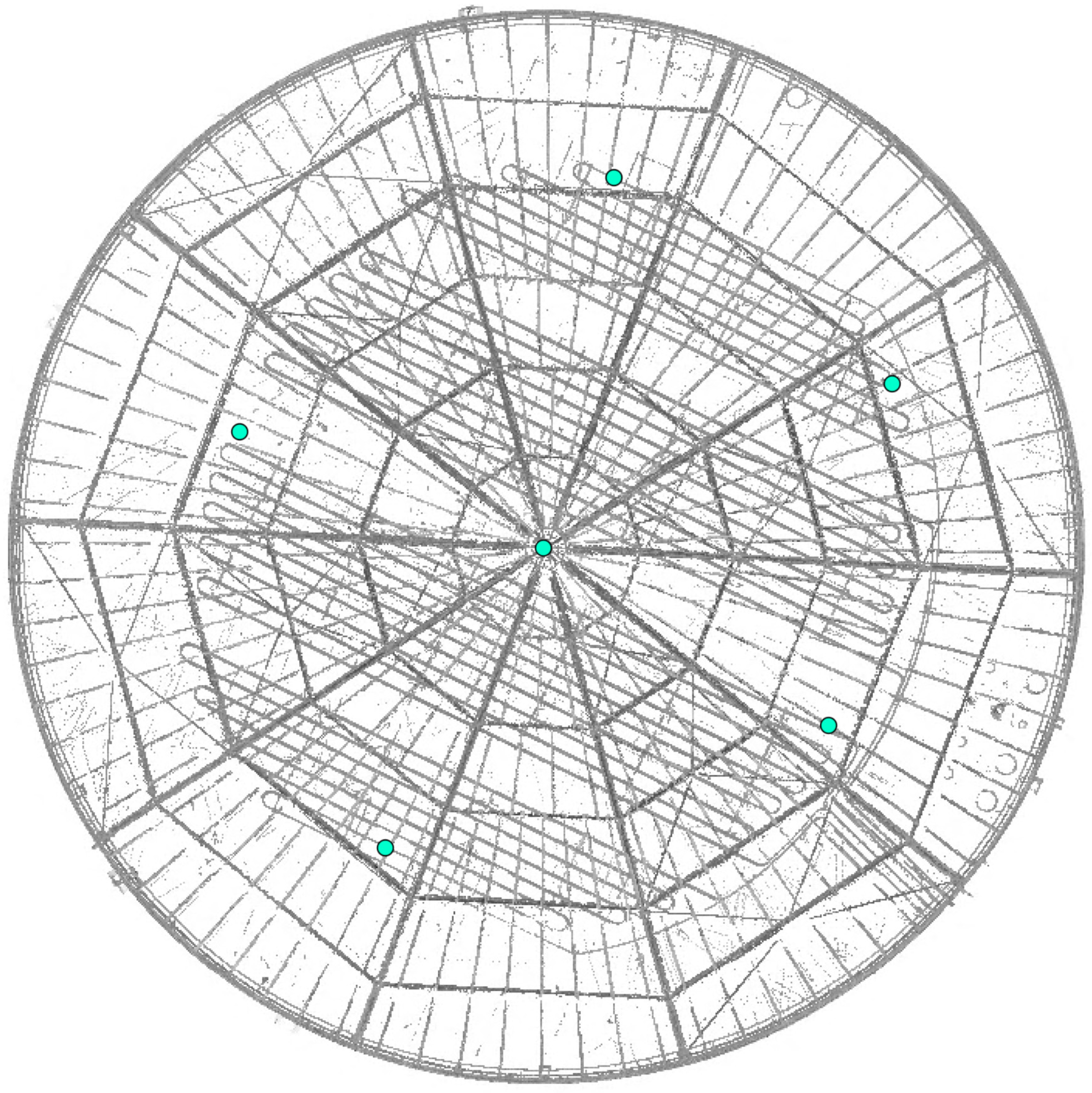
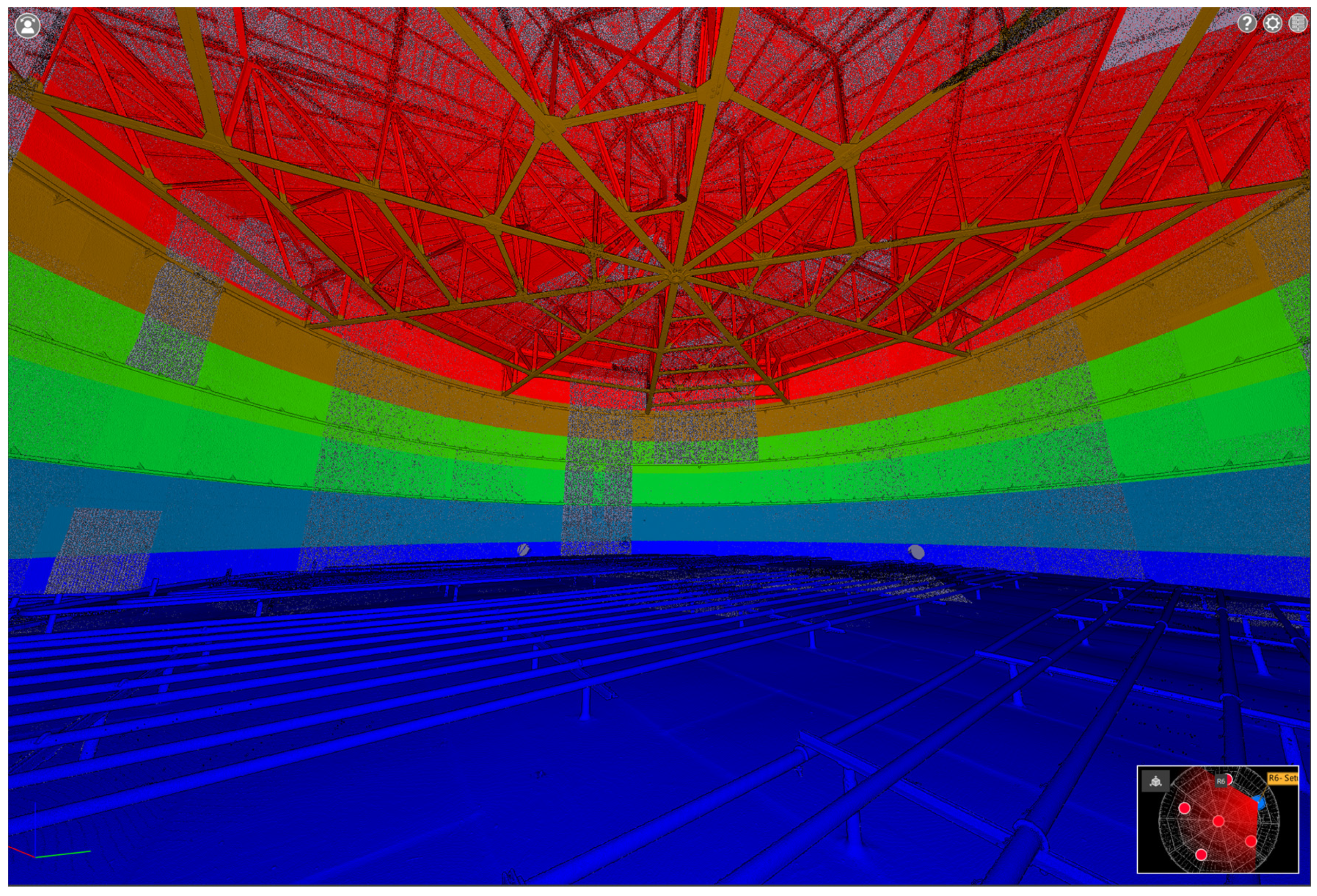
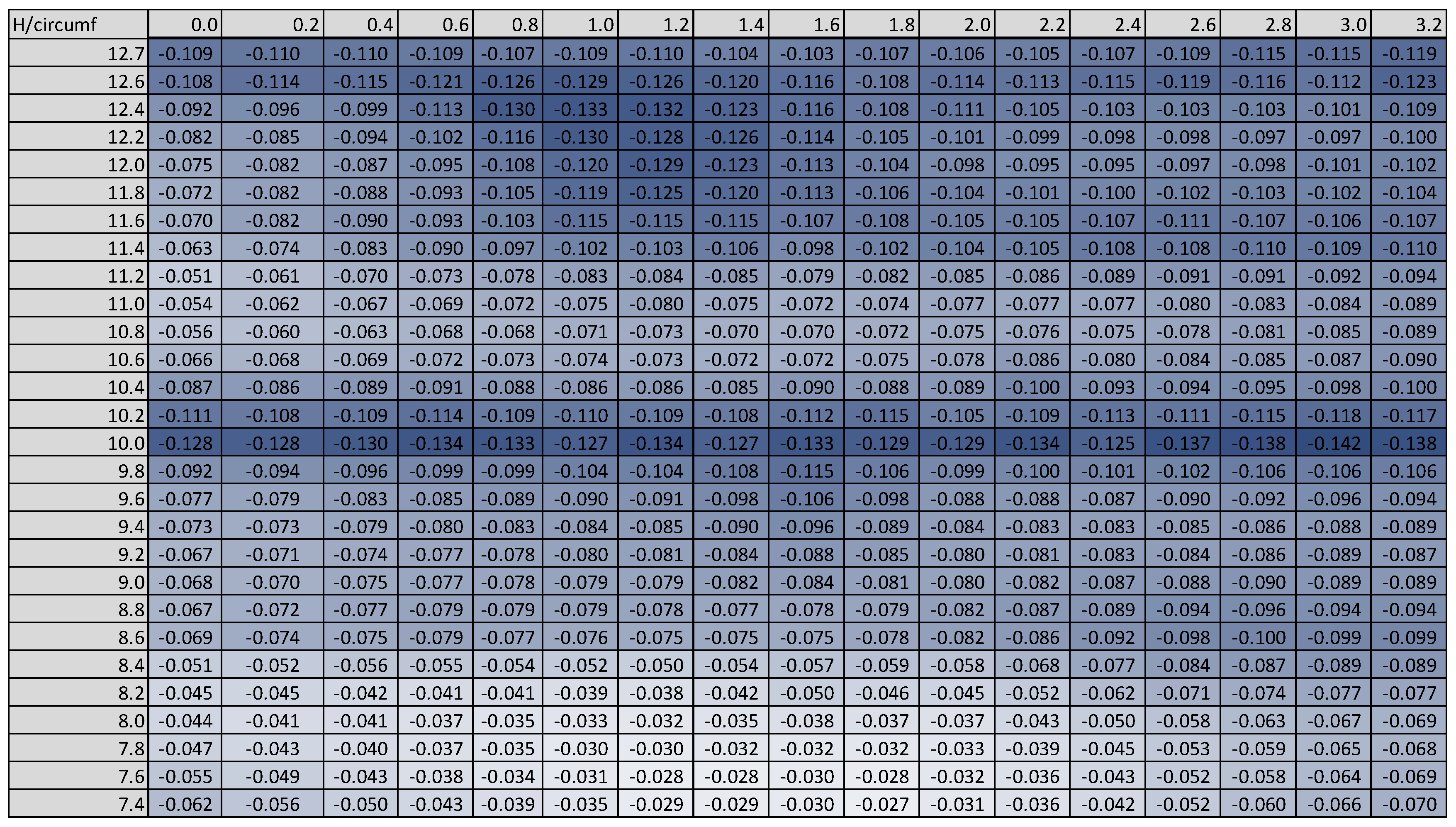
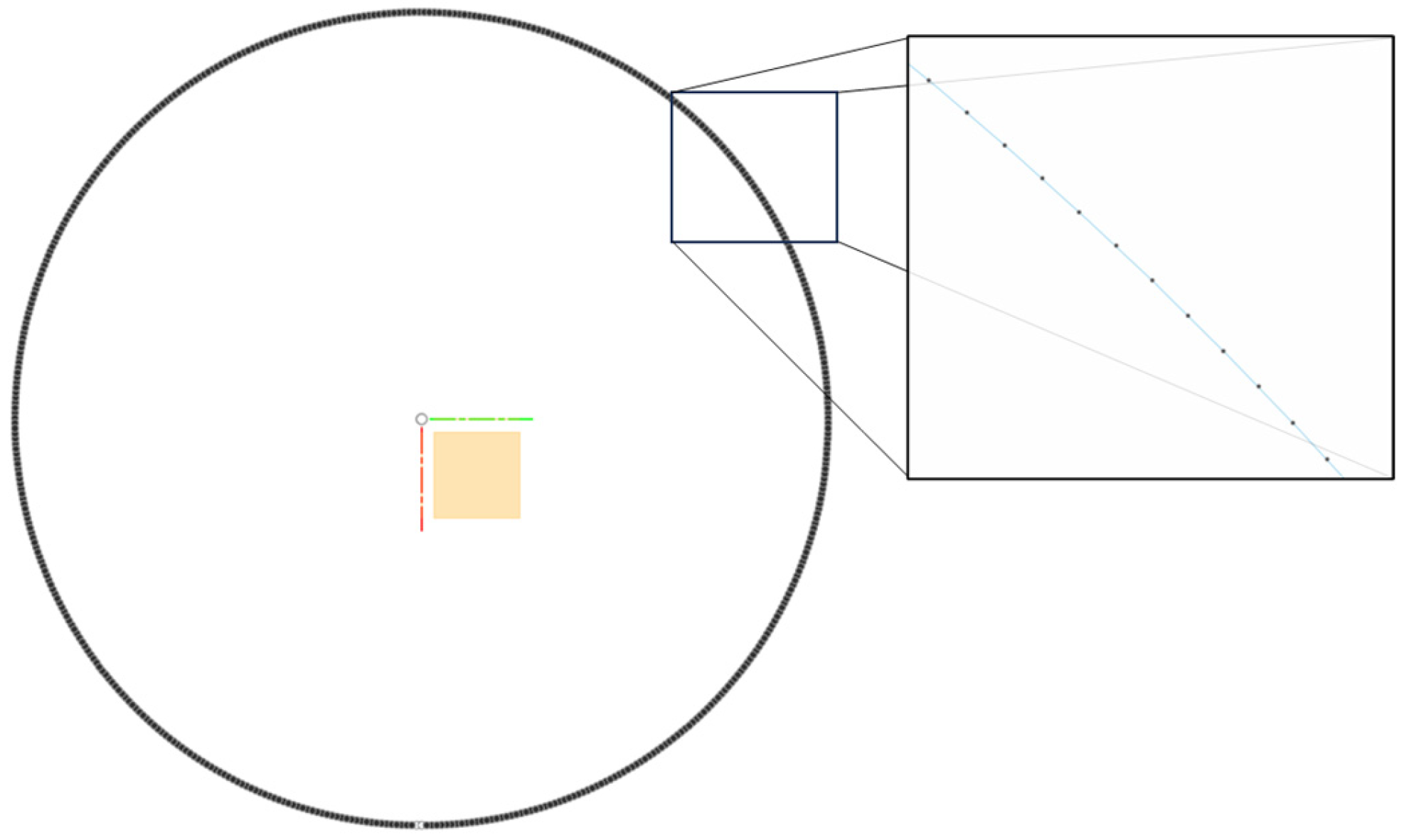

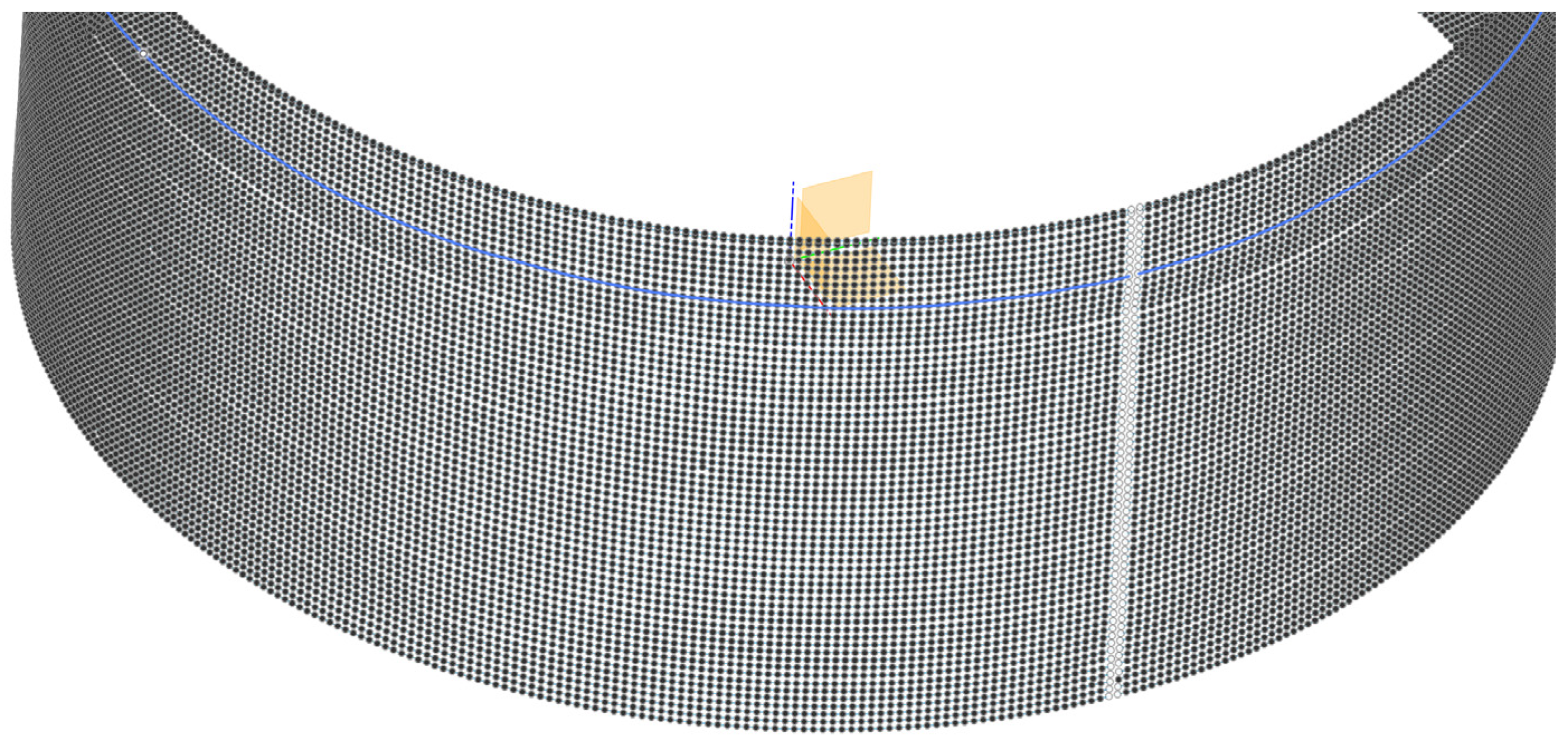
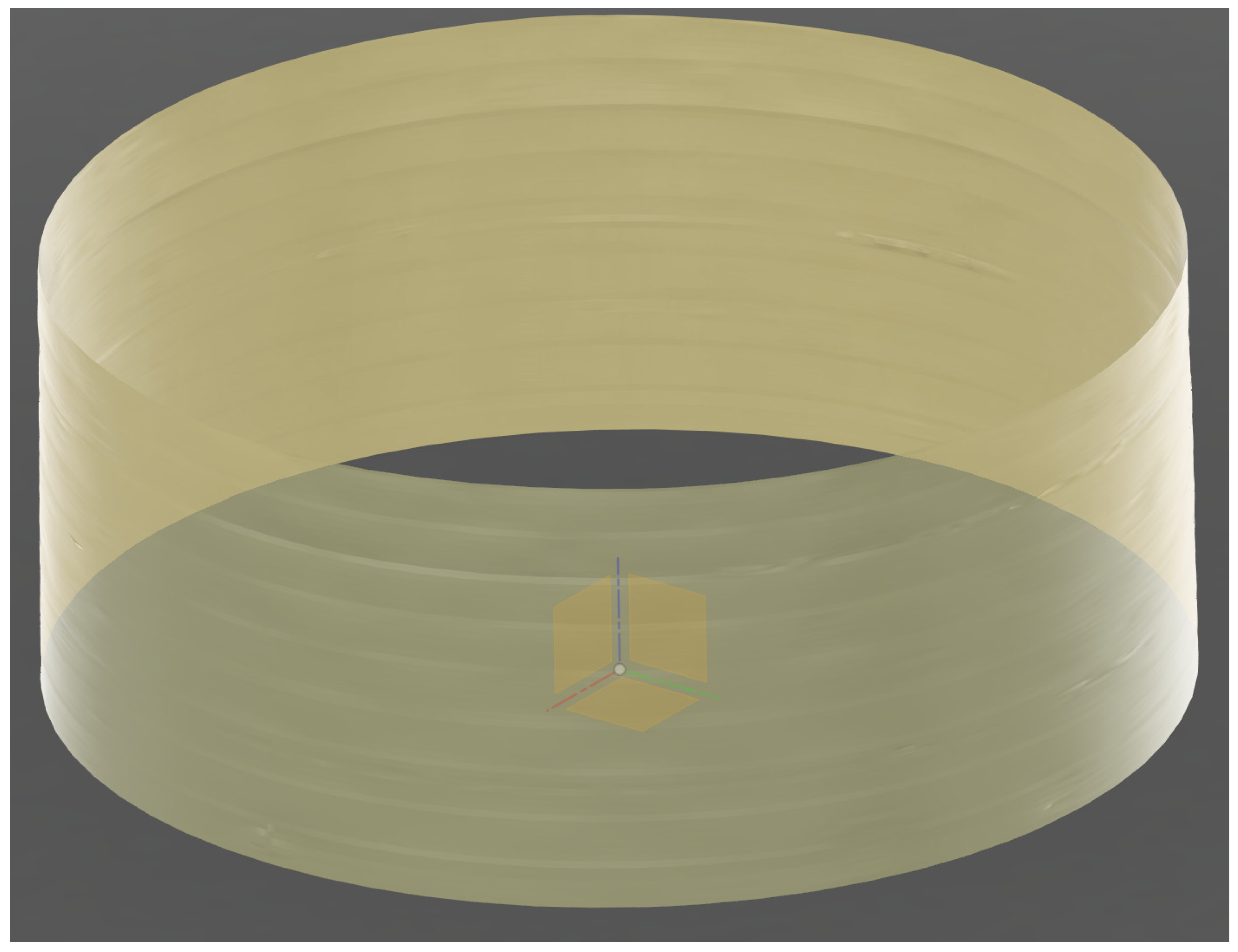

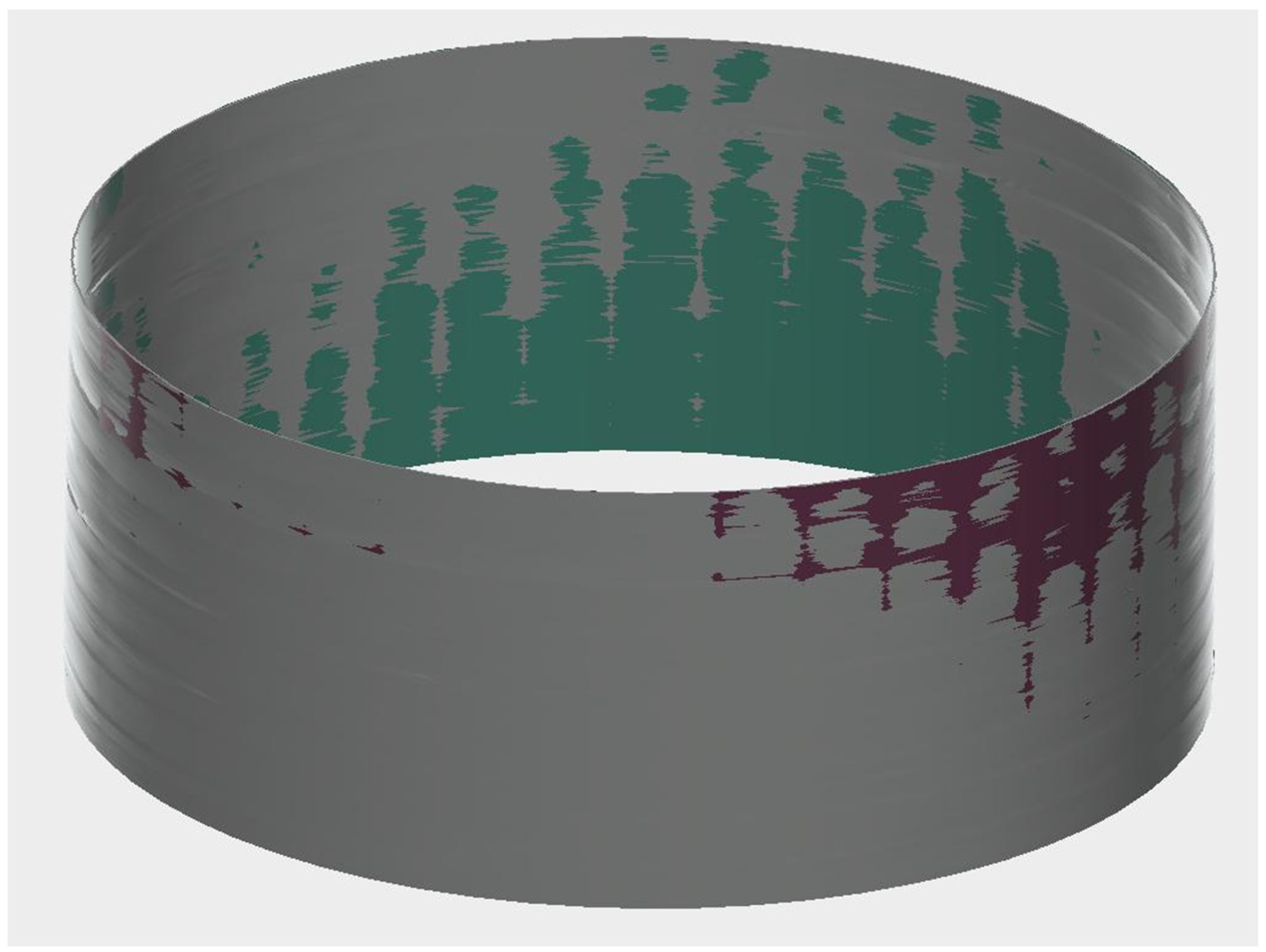
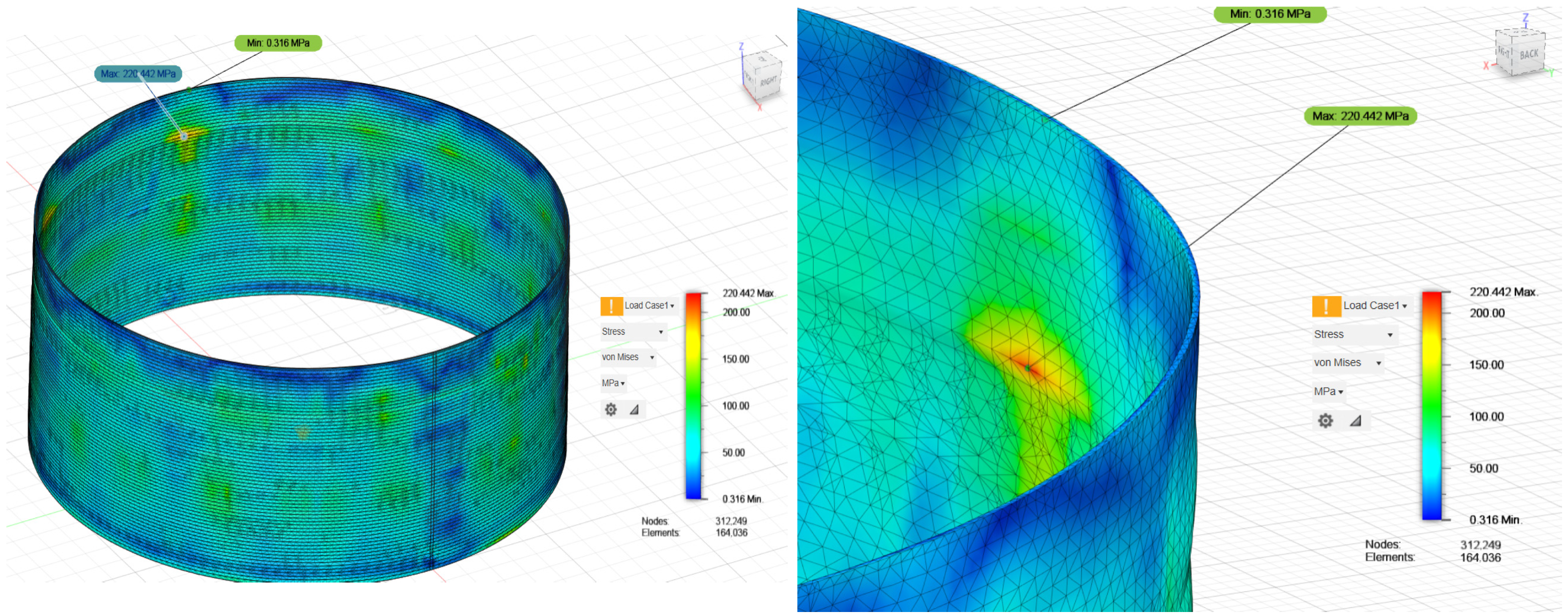

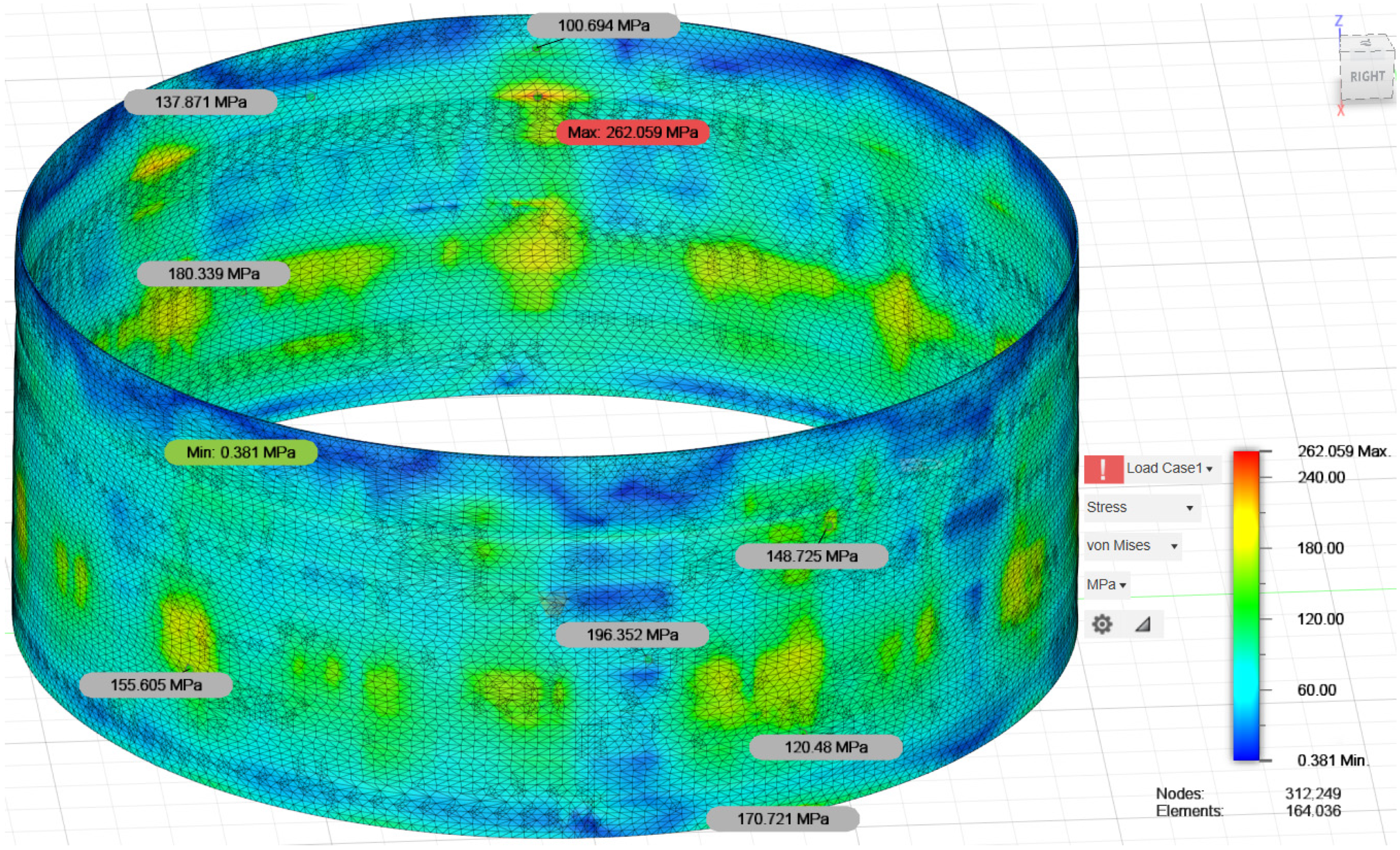

| Defect Type | Common Causes | Potential Risks |
|---|---|---|
| Corrosion | Stored product composition, environmental conditions (humidity, salinity, pollutants), lack of corrosion protection, microbial activity, moisture under insulation. | Weakening of tank structure, leaks, potential for fires or explosions (especially with flammable products), environmental contamination, operational disruptions. |
| Weld Cracks | Metal fatigue, stress concentration at welds, improper weld procedures, poor workmanship during construction or repair. | Weakening of tank structure, leaks, increased risk of fire or explosion if near fuel storage, potential for catastrophic failure. |
| Buckling | Overloading, overpressure/vacuum, external pressure, wind loads, seismic events, soil settlement. | Severe weakening of tank structure, deformations, potential for catastrophic collapse, release of stored product, environmental contamination, safety hazards. |
| Denting | Heavy impacts from collisions, falling objects, external debris. | Compromised structural integrity, increased vulnerability to corrosion, potential for crack initiation and propagation, localized weakening of the tank shell. |
| Ununiform Settlement | Irregular soil conditions, differential consolidation, unbalanced loads, seismic events, poor foundation conditions, soil erosion. | Compromised structural integrity, radial deformations of the shell, potential for floating roof jamming, damage to external connections and drainage, induction of bending stresses, potential for leaks or buckling, impact on operational stability and safety. |
| Tank Component | Corrosion Factors | Mitigation |
|---|---|---|
| Bottom upper side | The tank bottom is one of the areas most susceptible to corrosion due to the fact that water accumulates due to the higher density and corrodes, especially the HAZ of the welds | Cathodic protection, internal lining, and higher corrosion allowance |
| Bottom lower side | The lower side of the bottom is susceptible to aggressive corrosion depending on the foundation solution (elastic bed, concrete slab, etc.). When elastic beds without insulation is used there is a high risk of galvanic corrosion, which cannot be controlled. This could lead to bottom leaks. | Bitumen sand elastic bed provision or active cathodic protection |
| Lower Shell | The same as the bottom; the lower inner side of the tank shell is susceptible to corrosion due to water accumulation. The bottom-to-shell weld and especially its HAZ is a critical area to be considered from a corrosion protection point of view | Cathodic protection; internal lining |
| Upper shell | The upper courses of the shell, especially the last one, is the most susceptible to corrosion due to water vapor condensation on the inner side of the upper shell and, sometimes, depending on the stored product, vapors, combined with water, can conduct to chemical corrosion. | Internal lining; increased corrosion allowance |
| Roof | The same as the upper shell; the inner side of the roof elements are subjected to corrosion, and special attention needs to be given to the areas that can accumulate condensate (horizontal surfaces with no drain holes, areas where plates are overlapping steel structure beams, etc.). The roof-to-shell joint is a critical area from corrosion point of view because a minimum allowable section is considered during calculation and this needs to be available until the end of the equipment lifetime. | Internal lining, corrosion allowance, and natural drain means considered during the design stage |
| Outer tank surfaces | Corrosion of the outer tank surfaces is dependent on the environment where the tank is located. Usually, aggressive corrosion occurs on the tanks located ashore; hence, proper paint systems should be considered. Here, besides corrosion, erosion can also be considered in desert areas, where sandstorms can blast the tank’s outer surfaces and affect the coating and even the metal. | Proper corrosive protection classes to be considered according to standards (i.e., ISO 9223 [59]) along with a proper coating system. |
| Tank Component | Importance of Tank Stability and Tank Safe Operation |
|---|---|
| Bottom | The tank bottom is one of the components that assures the product containment. Even if less design calculation consideration is given for its design, being supported by the foundation, special attention should be paid to its welds (especially the bottom-to-shell one), and corrosion protection. Bottom containment failure can lead to product spillage, with environmental, cost, and social impact. It should also be noted that bottom leaks are the most difficult leaks to identify. |
| Shell | The tank shell is the most critical part of the tank; it is a thin wall that is treated with membrane design theories. The tank shell not only contains the whole hydrostatic liquid column and internal vapor pressure, but also the loads of the roof, snow and other equipment, and access steelwork. Shell failure can lead to catastrophic tank rupture and entire product content spillage. |
| Roof supporting steel structure | The roof steel structure is also of critical importance, since it supports not only the entire roof cover plates, nozzles, equipment, and access steelwork, but also the snow that may accumulate. |
| Roof plates | The roof plates seal the tank top, preventing any product vapors from escaping into the atmosphere, or any lightning from causing an explosion, and rain and other elements from coming in contact with the stored product. |
| Nozzles | The nozzles are the objects that make the connection between the tank containment and the piping, and their proper dimensioning is of the highest importance. |
| Access steelwork | The steelwork is important for tank access, especially on the roof for manual product level measuring and inspection/maintenance. The access steelwork, as with the tank structure, is of the highest importance for the personnel safety. |
| Corrosion protection | The corrosion protection, both external and internal, is the barrier that protects the metallic components from the corrosive action of the product and environment. |
| Degradation Mechanism | Consequences | Grade of Importance |
|---|---|---|
| Corrosion | Local thinning of the tank components can lead to loss of containment and product loss, and even tank catastrophic collapse. | Very high |
| Erosion | It is less encountered, even if it can have the same consequence of corrosion, due to the fact that the tank configuration can only have local, limited effects. | Medium |
| Fatigue | Fatigue can lead to local material property alterations and can finally result in containment loss and even tank catastrophic collapse. | High |
| Buckling | Buckling is widely encountered when tanks are not properly designed and can lead to loss of containment and product loss, and even tank catastrophic collapse. | Very high |
| Fracturing | Fractures are most commonly generated by either weld defects or plates/profiles flaws and can lead to loss of containment and product loss and even tank catastrophic collapse. | Very high |
| Overloading | This is classified also as a human error and can put the tank through loads that it was not designed for and can finally lead to loss of containment and product loss, and even tank catastrophic collapse. | Very high |
| Course Number | Course Height (m) | Hydrostatic Pressure (MPa) |
|---|---|---|
| 1 | 1.5 | 1.055 |
| 2 | 1.4 | 0.0928 |
| 3 | 1.4 | 0.0800 |
| 4 | 1.42 | 0.0673 |
| 5 | 1.43 | 0.0545 |
| 6 | 1.43 | 0.0417 |
| 7 | 1.45 | 0.0289 |
| 8 | 1.45 | 0.0162 |
| 9 | 1.49 | 0.0034 |
| Course Number | EUROCODE Stress Value (MPa) | FEA Stress Value (MPa) |
|---|---|---|
| 1 | 119.508 | 170.721 |
| 2 | 148.361 | 120.480 |
| 3 | 151.625 | 155.605 |
| 4 | 212.771 | 180.339 |
| 5 | 162.660 | 196.352 |
| 6 | 189.295 | 148.725 |
| 7 | 111.700 | 262.059 |
| 8 | 108.178 | 137.871 |
| 9 | 58.568 | 100.694 |
| Course Number | % of the Shell Deformed Beyond Allowable Limit |
|---|---|
| 1 | 17.3 |
| 2 | 16.88 |
| 3 | 13.35 |
| 4 | 14.65 |
| 5 | 18.82 |
| 6 | 32.82 |
| 7 | 45.59 |
| 8 | 58.46 |
| 9 | 60.45 |
Disclaimer/Publisher’s Note: The statements, opinions and data contained in all publications are solely those of the individual author(s) and contributor(s) and not of MDPI and/or the editor(s). MDPI and/or the editor(s) disclaim responsibility for any injury to people or property resulting from any ideas, methods, instructions or products referred to in the content. |
© 2025 by the authors. Licensee MDPI, Basel, Switzerland. This article is an open access article distributed under the terms and conditions of the Creative Commons Attribution (CC BY) license (https://creativecommons.org/licenses/by/4.0/).
Share and Cite
Stoicescu, A.-A.; Ripeanu, R.G.; Tănase, M.; Ilincă, C.N.; Toader, L. Multifactorial Analysis of Defects in Oil Storage Tanks: Implications for Structural Performance and Safety. Processes 2025, 13, 2575. https://doi.org/10.3390/pr13082575
Stoicescu A-A, Ripeanu RG, Tănase M, Ilincă CN, Toader L. Multifactorial Analysis of Defects in Oil Storage Tanks: Implications for Structural Performance and Safety. Processes. 2025; 13(8):2575. https://doi.org/10.3390/pr13082575
Chicago/Turabian StyleStoicescu, Alexandru-Adrian, Razvan George Ripeanu, Maria Tănase, Costin Nicolae Ilincă, and Liviu Toader. 2025. "Multifactorial Analysis of Defects in Oil Storage Tanks: Implications for Structural Performance and Safety" Processes 13, no. 8: 2575. https://doi.org/10.3390/pr13082575
APA StyleStoicescu, A.-A., Ripeanu, R. G., Tănase, M., Ilincă, C. N., & Toader, L. (2025). Multifactorial Analysis of Defects in Oil Storage Tanks: Implications for Structural Performance and Safety. Processes, 13(8), 2575. https://doi.org/10.3390/pr13082575









